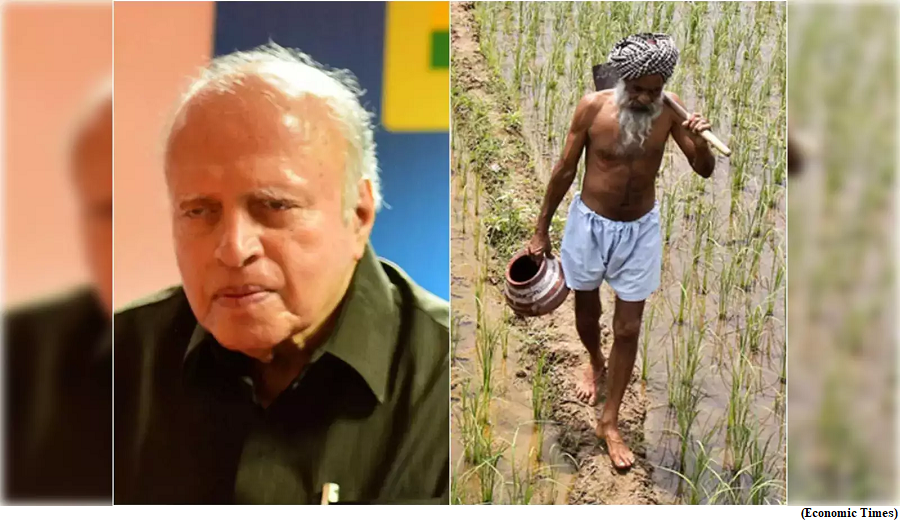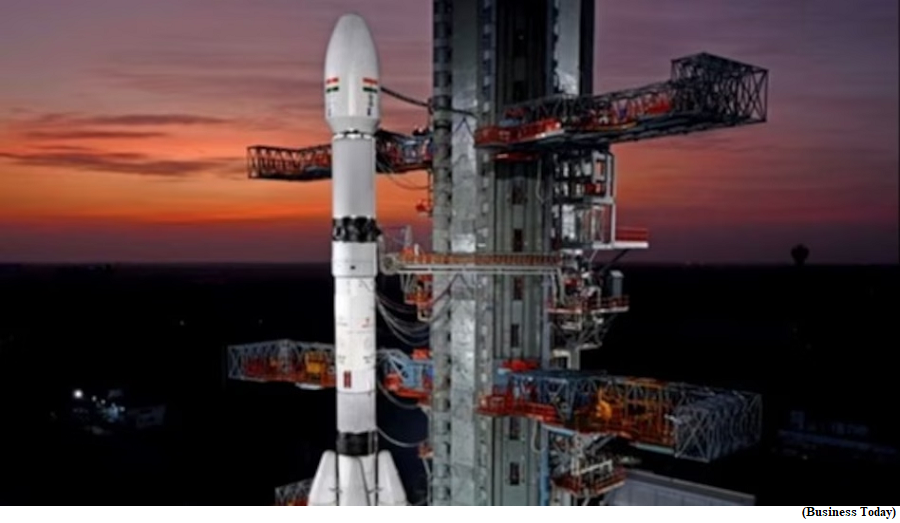What Swaminathan panel said (GS Paper 3, Economy)

Why in news?
- The first of the 12 demands made by protesting Punjab farmers in their email sent to the government on February 6 was for a law to guarantee the procurement of all crops for all farmers at MSP, and for the determination of crop prices as per the recommendations of the Dr Swaminathan Commission.
- Three rounds of talks held in Chandigarh between three Union Ministers and the leaders of farm unions have remained inconclusive.
Swaminathan Commission: terms of reference, reports
- Agricultural scientist M S Swaminathan, who was posthumously awarded the Bharat Ratna recently, played a major role in the changes in Indian agriculture in the 1960s and 70s that helped India achieve food security.
- On November 18, 2004, the Ministry of Agriculture constituted a National Commission on Farmers (NCF) under Prof Swaminathan.
- The 10-point terms of reference of the commission, which reflected the Common Minimum Programme of the Congress-led UPA government, included suggesting a “comprehensive medium-term strategy for food and nutrition security”, and ways of “enhancing productivity, profitability, and sustainability of the major farming systems” in the country.
- Between December 2004 and October 2006, the NCF submitted five reports running into a total 1,946 pages. The reports were deeply sympathetic to farmers, and made several recommendations, including at least two on minimum support prices (MSP).
- However, the Swaminathan Commission did not recommend either a legal guarantee for MSP or the formula for its calculation that the farmers’ unions are now demanding.
Key Highlights:
- The first report of the NCF, titled ‘Serving Farmers and Saving Farming’, opens with the sentence, “The acute agricultural distress now witnessed in the country, occasionally taking the form of suicides by farmers, is the symptom of a deep seated malady arising from inadequate public investment and insufficient public action in recent years.”
- A chapter in the report, titled ‘A New Deal for Women in Agriculture’, underlined the “need…to ensure that working women have the needed support services and have access to timely credit and extension services”.
- It called for the setting up of a National Board for New Deal for Women in Agriculture under the Union Food and Agriculture Minister, with the Union Ministers for Women and Child Development, Rural Development, and Panchayati Raj as co-chairs.
- The report also suggested that Farm Schools should be established in the fields of innovative farmers, in order to spread their message and methods. “Promoting 50,000 Farm Schools across the country will require an investment of Rs 150 crore,” it estimated.
- The report suggested establishing a grain bank and community food and fodder banks, promoting insurance, and setting up a national network of advanced soil testing labs.
Repealed farm laws:
- The 471-page second report of the NCF was titled ‘From Crisis to Confidence’. It recommended a code of conduct for contract farming, and advocated amendments in the state APMC Acts and the Essential Commodities Act. In a sense, its recommendations were pro-market reforms-oriented.
- In fact, the three farm laws introduced by the Narendra Modi government in 2020, and repealed under pressure from the protesting farmers, were on the lines of these recommendations of the Swaminathan Commission.
- The Commission recommended futures and options trading in agricultural commodities, with supervision and regulation by a “SEBI like autonomous body”.
What the Commission said on Minimum Support Prices?
- The Swaminathan Commission did not recommend the fixing of MSP based on C2 (actual cost of production) plus 50 per cent, as demanded by the protesting farmers. In its second report, the NCF made just two recommendations relating to MSP.
- First, “Delay in issue of the Minimum Support Price (MSP) particularly in respect of Kharif crops needs to be avoided.”
- Second, “Implementation of MSP across regions needs improvement.” The Commission noted that “except Punjab, Haryana, UP, and Andhra Pradesh to some extent, the prices of agri commodities covered under MSP often rule below the MSP in absence of any government intervention”.
- Despite weaknesses, MSP “may have to be continued in the foreseeable future and its implementation improved”.
- While the report did not mention calculation of MSP based on C2, it did discuss the cost of production, and made a suggestion for the Commission for Agricultural Costs and Prices (CACP), which recommends MSPs.
Abhijit Sen Committee:
- The second report highlighted the recommendations of the High Level Committee on Long Term Grain Policy, 2002 headed by the economist Abhijit Sen. The Abhijit Sen Committee had examined various aspects connected with MSP and price support operations.
- The Abhijit Sen Committee had said: “In recommending MSPs, which should apply on Fair Average Quality (FAQ) grain, the CACP should go strictly on the basis of C2 cost of production (i.e., all costs including imputed costs of family labour, owned capital and rental on land) in more efficient regions… The CACP should also indicate its estimates of A2 + FL costs (i.e., costs actually paid plus imputed value of family value labour) for relatively high cost regions.”
- But this recommendation did not find mention in the recommendations of the Swaminathan Commission.
Conclusion:
- In the first volume of its fifth report, the NCF summed up its recommendation for MSP: “MSP should be regarded as the bottom line for procurement both by Government and private traders. Purchase by Government should be MSP plus cost escalation since the announcement of MSP. This will be reflected in the prevailing market price. Government should procure the staple grains needed for PDS at the same price private traders are willing to pay to farmers.”
ISRO successfully launches weather satellite INSAT-3DS
(GS Paper 3, Science and Technology)
Why in news?
- The Indian Space Research Organisation (ISRO) successfully launched the INSAT-3DS mission into space aboard the heavy-lift Geosynchronous Satellite Launch Vehicle Mk-II (GSLV-MkII).
- The mission, designed to operate in space for 10 years, aims to boost India's environment monitoring, oceanic observations, weather forecasting, and disaster relief operations.
- It took off from the Satish Dhawan Space Centre in Sriharikota.

What is INSAT-3DS?
- The INSAT-3DS, a state-of-the-art meteorological satellite, is the latest addition to India's third-generation satellites in geostationary orbit.
- It follows the successful deployment of its predecessors, INSAT-3D and INSAT-3DR, which have been instrumental in enhancing weather observation and analysis since their respective launches, with INSAT-3DR having been operational since September 2016.
Instruments Onboard:
- The satellite is equipped with a multi-spectral Imager (optical radiometer) capable of capturing images of the Earth and its surroundings in six distinct wavelength bands.
- INSAT-3DS features a robust Sounder payload with a total of 19 channels, including one Visible channel and eighteen narrow spectral channels. The Sounder payload is designed to provide vital information about the vertical profiles of the atmosphere, covering aspects such as temperature, humidity, and more.
- The satellite is also equipped with a Data Relay Transponder (DRT) that plays a crucial role in receiving meteorological, hydrological, and oceanographic data from automatic Data collection platforms/Automatic Weather Stations (AWS) worldwide. The DRT then relays this valuable information back to user terminals, ensuring efficient global data dissemination.
- A Satellite-aided Search and Rescue (SA&SR) transponder designed to relay distress signals and alert detections from beacon transmitters has also been sent with the spacecraft. This capability significantly enhances Search and Rescue operations, providing global coverage in the UHF band.
Significance:
- The satellite's primary objectives are multifaceted and crucial for environmental monitoring and safety. It is equipped to monitor the Earth's surface and carry out oceanic observations in various spectral channels that are vital for meteorological analysis.
- The 2274-kilogram INSAT-3DS satellite is equipped with advanced payloads designed to provide more accurate and timely data on atmospheric conditions.
- This enhancement in meteorological services is expected to significantly benefit various sectors, including agriculture, aviation, and disaster management, by enabling better preparedness for weather-related challenges.
- It will provide vertical profiles of atmospheric parameters such as temperature and humidity, which are essential for accurate weather predictions.
Way Forward:
- Data Collection Platforms (DCPs) will benefit from the satellite's data collection and dissemination capabilities, enhancing the reach and efficiency of information gathering.
- Moreover, the INSAT-3DS will offer Satellite Aided Search and Rescue services, contributing to emergency response efforts.



